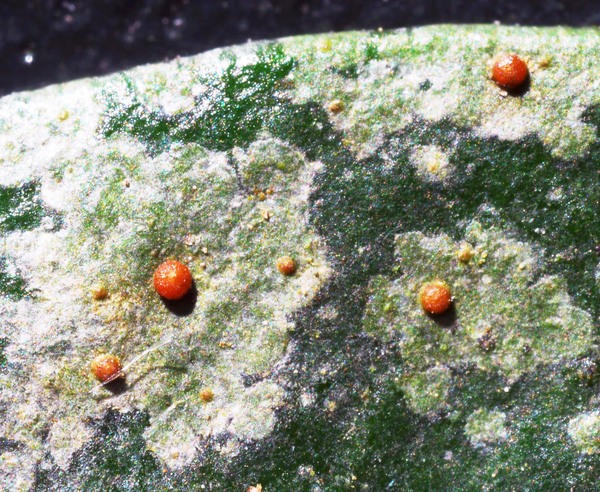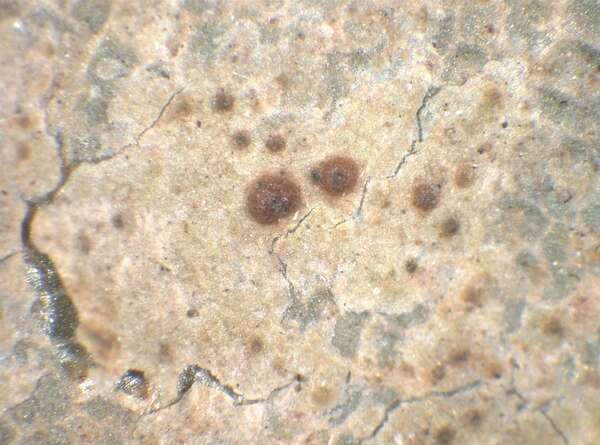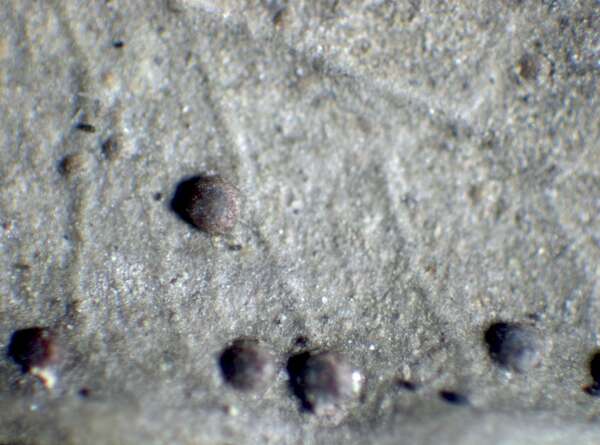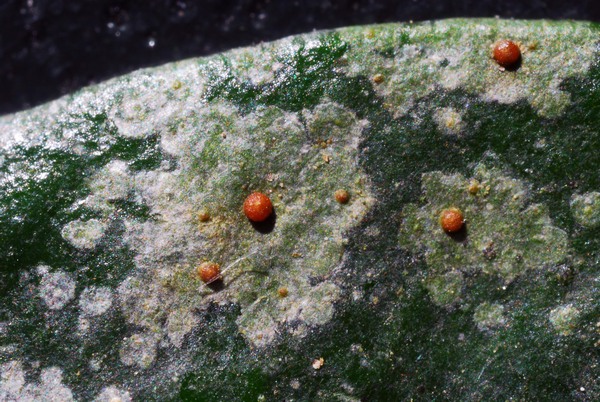Porina hoehneliana (Jaap) R. Sant.
Symb. Bot. Upsal., 12, 1: 262, 1952. Basionym: Calonectria hoehneliana Jaap - Ann. Myc., 14: 10, 1916.
Synonyms:
Distribution: C - Tosc (Puntillo & Ottonello 1997, Puntillo 2000), Umb (Ravera & al. 2011), Laz. S - Camp (Puntillo & al. 2000, Puntillo 2000, Nimis & Tretiach 2004, Puntillo & Puntillo 2004), Bas (Puntillo & al. 2012), Cal (Puntillo 1996, 2000, Sérusiaux 1998).
Description: Thallus crustose, thinly episubstratic, continuous or forming small dispersed patches, smooth, grey to grey-green, without a distinct prothallus. Perithecia 0.15-0.3 mm across, hemispherical, only slightly constricted at base, dark reddish brown, somehow shiny, partly covered by a thalline layer at least when young. Involucrellum 10-30 μm thick, yellowish red, K+ orange (Porina-yellow pigment), extending down to the substrate; algal cells present in a layer between involucrellum and exciple; exciple prosoplectenchymatous, colourless or pale yellow, 4-7 μm thick in upper part, up to 15 μm thick at base; paraphyses richly branched and anastomosing, c. 1.5 µm thick; hymenial gel I-, K/I-. Asci 8-spored, clavate-cylindrical, thin-walled throughout, functionally unitunicate, dehiscent by rupture of the apex, with no extruded inner layers and an apical ring structure, I-, K/I-. Ascospores 3-septate, hyaline, fusiform to almost bacilliform with subacute ends, 17-23 x 2-3.5 µm. Photobiont trentepohlioid. Spot tests: thallus K-, C-, KC-, P-. Chemistry: thallus without lichen substances.Note: a humid subtropical to Mediterranean-Atlantic lichen found on smooth bark and leaves of evergreen plants (e.g. on leaves of Buxus and cladodes of Ruscus) in warm-humid woodlands near the coast; exclusively Tyrrhenian in Italy. It is included in the Italian red list of epiphytic lichens as “Vulnerable” (Nascimbene & al. 2013c).
Growth form: Crustose
Substrata: bark and leaves
Photobiont: Trentepohlia
Reproductive strategy: mainly sexual
Most common in areas with a humid-warm climate (e.g. most of Tyrrenian Italy)
Commonnes-rarity: (info)
Alpine belt: absent
Subalpine belt: absent
Oromediterranean belt: absent
Montane belt: absent
Submediterranean belt: absent
Padanian area: absent
Humid submediterranean belt: extremely rare
Humid mediterranean belt: very rare
Dry mediterranean belt: absent
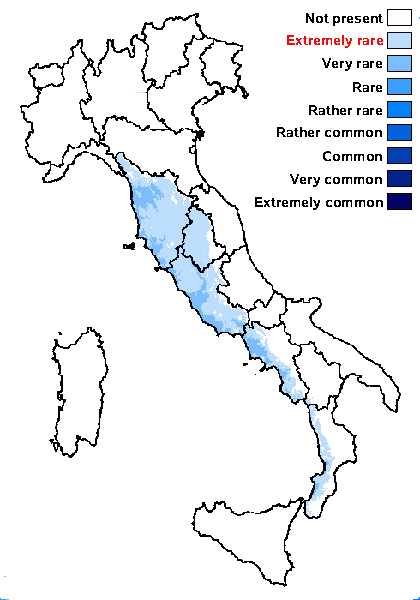
Predictive model
Herbarium samples
Growth form: Crustose
Substrata: bark and leaves
Photobiont: Trentepohlia
Reproductive strategy: mainly sexual
Most common in areas with a humid-warm climate (e.g. most of Tyrrenian Italy)
Commonnes-rarity: (info)
Alpine belt: absent
Subalpine belt: absent
Oromediterranean belt: absent
Montane belt: absent
Submediterranean belt: absent
Padanian area: absent
Humid submediterranean belt: extremely rare
Humid mediterranean belt: very rare
Dry mediterranean belt: absent

Predictive model
| Herbarium samples |
 INDEX FUNGORUM
INDEX FUNGORUM
 GBIF
GBIF
